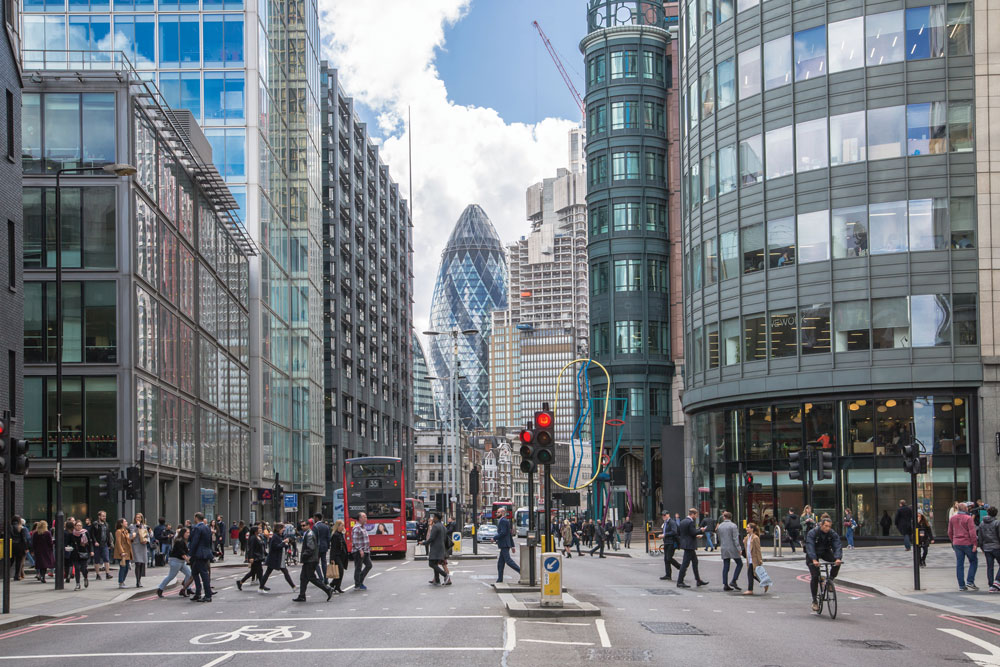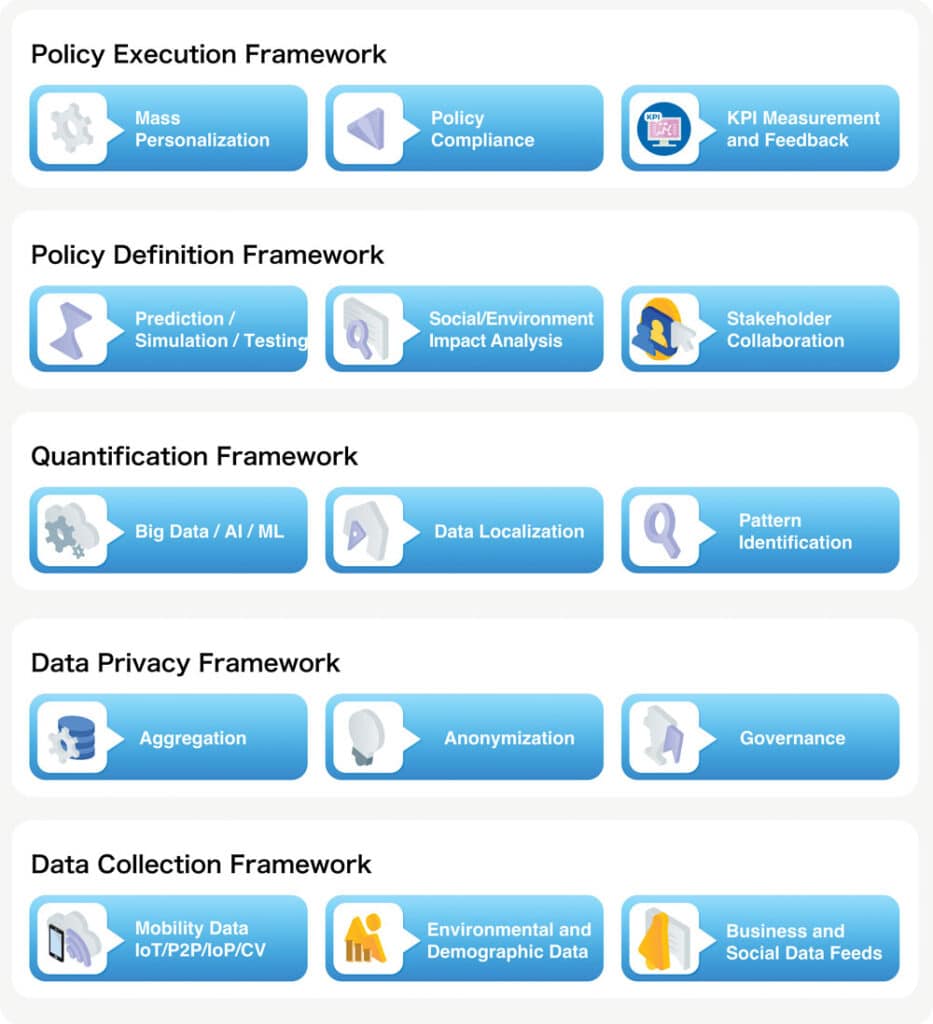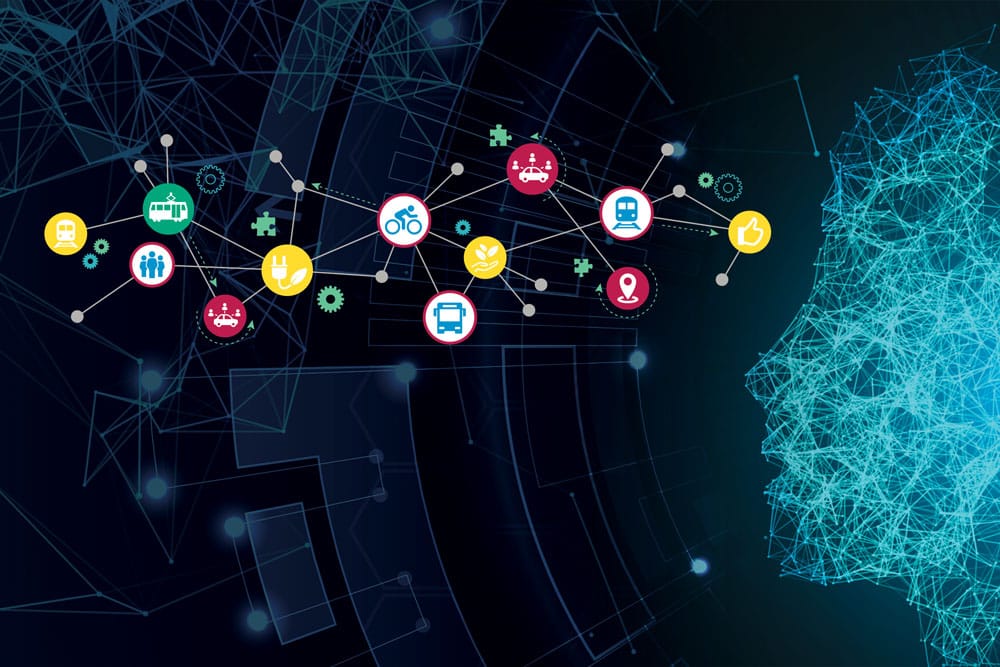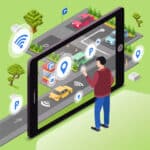Defining Adaptive Public Policies for the Equity in Mobility
In our shining vision of a hyper-connected, hyper-mobile world with smart cities and smart suburbs, the impacts and needs of the disadvantaged communities often get blurred. Throughout the country, from big cities to the suburbs, from San Francisco to New York, on the one hand mobility is transforming the lives of many. On the other hand, the marginalization of disadvantaged communities and homelessness is on rise. There may or may not be a causal link between the two, but both are very clearly correlated.
A technology framework is needed to help define the public policies related to mobility, such that a clear attribution of the policy impact on the disadvantaged communities can be measured. With such a framework, a feedback mechanism can be established for the continuous improvement and adaptation of the public policies to keep pace with the hyper growth in mobility.
- Economic development and growth, including improving the quality of life and connecting people with economic opportunity, jobs, and community, goods, and services.
- Improved mobility options through safe, efficient, equitable, and diverse modes of transportation.
- Alignment with IPMI’s Sustainability Framework to reduce congestion, emissions, and environmental impacts to the triple bottom line of people, planet, and profit.
- Improved access to transportation and mobility for all communities and demographics.
Hyper Growth in Mobility Exacerbates Social Inequities
Traditional transportation options have posed inequities for disadvantaged communities in the form of affordability, or lack of access due to distant or unfavorable routes. New transportation options add another dimension of digital disadvantage to these inequities; since most of the new modes of transportation including transportation network companies (TNCs), electric bikes and scooters, and car sharing require smartphones and online payment capability through credit cards or online banking, they lock out those who do not have smartphones, are not technologically savvy, don’t have bank accounts, or don’t own credit cards. As parking and transportation move in the direction of cashless solutions, these communities may become further marginalized. These technology-focused options also open room for discrimination due to sharing of the customer profiles and the neighborhoods they live in. TNC drivers have cancelled trips based on the pickup location or neighborhood.

Making even the traditional transportation options less equitable is the new phenomenon of train and bus stations becoming hubs of transportation and multi-use retail. Often located in high-priced, high-rise residential complexes attracting the younger more affluent generation who do not want to own cars, this can result in the displacement of lower income families who used to live in these neighborhoods near the bus and train stations when they were seen as less desirable, and therefore lower priced.
Past Proposed Policy Solutions
Over the years the city planners and transportation industry experts have proposed and attempted several policies to solve the problems of inequity in mobility. Many of these policy trials were successfully rolled out. However, many others failed and were never adopted. As the parking, transportation, and mobility industry rapidly evolves, new policies would be defined to keep pace with the change. The following are some of the policy ideas proposed by policymakers and industry experts in past [1,2].
- Give shared modes priority in planning and infrastructure to facilitate transportation options for residents who don’t own cars.
- Plan for affordability and access by re-examining transit routes and new mobility options.
- Create pathways to opportunity in the new mobility economy for low-income individuals to participate as workers with benefits in this new mobility economy, and to fund job training programs.
- Provide prepaid, subsidized, transport payment cards and accounts to the low income or unbanked and credit deprived individuals.
- Encourage mobility providers to make design changes to their technologies to provide equitable access to those who are not tech-savvy or do not own smartphones.
- Strategic revenue investment into amenities for the disadvantaged so they do not get displaced due to neighborhood development leading to the risk becoming priced out.
- Provide refunds or tax credits to car-less households to use toward other transportation options.
- Redirect transportation investments to areas that have more people and higher needs.
- Offer unbundled parking and parking cash outs to provide equity between those who own the cars and those who rely on other transportation options.
Realities to Consider before Defining Policies to Solve the Inequities
Each community has unique needs. This increases the importance of first understanding those unique needs, and then developing equitable solutions and targeting resources specifically to those residents that are most in need or facing disproportionate impacts. In designing policies that balance the costs and benefits of their policy decisions, policy makers face some difficult realities impeding their decision making.
We can’t fix what we are unable to properly quantify
If we cannot quantify the problem and its causes, we cannot effectively solve it. By extension we cannot improve upon our solutions if we cannot measure the outcomes. Macro level numbers like the number of packages delivered by UPS nationally annually or the number of TNC trips per quarter are great statistics to have. One can deduct from these statistics that these activities are leading to congestion at the curbs, which leads to increased transportation costs, and thus reduces transportation options for low-income citizens. These are helpful for national level recognition that we have a problem, and to mobilize us to have a national level call-to-action to do something about it.
But the policies to solve the problems of inequities for racially, geographically, socially, or financially diverse communities can only work if policies are reliably backed by the data local to those communities. So, regarding the above statistics for example, until we quantify how many UPS delivery or TNC trips are taken in these communities, and what the local streets level statistics are, we won’t really know if and how they are causing problems at the curb, and any policy to solve these problems would not necessarily be effective in any particular community. Worse, in some communities the problems may be compounded.
This is not a zero-sum game
Finding solutions for low-income communities does not have to come at the cost of making transportation more difficult or unaffordable for the middle class. For example, some solutions like removing street parking or increasing parking fees may work in certain communities as it may generate additional revenues to pay for social equity programs. However, this can also adversely affect the same communities these solutions are trying to help, as low-income residents may also end up paying more for parking or may have difficulty finding parking. Solutions do not have to be a zero-sum game. Technology can increase the overall size of the pie, and if used properly, it can enable personalized benefits to those who need them most, while not penalizing others.
One size does not fit all

Making universal policies at the national level, or even at the state level, rather than the targeted policies for the local communities would hurt more people than it would help. As we have learned working with the parking operators from all community types and regions, their challenges are widely different, as are those of the customers who park there, and the communities that live around them. Each community has unique needs and challenges which depend on many factors including geographic, economic, demographic, or cultural attributes. Locally targeted policies would improve the outcomes for everybody.
Pace of evolution of mobility would only increase
The mobility revolution is seeing a hyper and irreversible growth. Many new mobility-based business models have evolved in a very short time, and every day there are new models introduced. Some take off and some fail. Equity-based solutions should not be regressive to slow down the pace of this revolution, rather the focus should be on how to give a boost to those who are not able to keep up.
Technology Framework for Adaptive Public Policies
Given the above realities associated with the mobility revolution, a technology framework is urgently required to provide direction for finding incremental solutions to these inequities and that would help simulate, evaluate, and incrementally rollout these policies for the best outcomes for each neighborhood.
Not only would this technology framework help various city planning and transportation planning bodies systematically create a roadmap for the incremental definition and execution of their policies, but it would also provide them with a continuous feedback loop to measure the outcomes of their policy rollouts. Further, it would provide them with an agile framework to rapidly adopt, evolve, and optimize their policies for the greater impact on social inequities, while keeping pace with the revolution in mobility.

While defining this technology framework, we took inspiration from the IPMI Mobility frameworkwhich defines three fundamental activity flows in mobility ecosystem:
- Physical Flow: movement of goods, people, services.
- Data Flow: the sharing of data to plan and coordinate physical activity and process transactions.
- Financial Flow: the distribution of funds from the user of services to the provider of services.
Keeping these activity flows in mind, we defined the components needed such that when the mobility equity policies are defined using this technology framework, then all these fundamental flows are addressed for disadvantaged communities. Lack of easy access to any of these three activity flows, would only lead to further inequities.
Components of the Technology Framework
This technology framework would be implemented on a digital platform, which would allow for agile measurement, modifications, and rapid and continuous deployment of new policies and policy updates. The following are the key components of this framework.
1. Data Collection Framework
Underlying any decision-making system is the comprehensive data collection framework. Complexity faced by the equity policy decision makers is exponentially more challenging than those faced by the business decision makers. There are many variables involved that define the communities and the disadvantages faced by them. Diversely and rapidly evolving mobility business models add many more dimensions to the problem. Thankfully digitalization has made collection of data at this scale possible.
A comprehensive data collection framework involves data collection technologies like Internet of Things (IoT), location specific data with Internet of Places (IoP), and Peer to Peer (P2P) sharing, Computer Vision (CV), and others, to collect mobility data. The framework also includes data feeds to collect environmental and demographic data, and local business activity data from businesses, and the community social opt-in data, shared anonymously.
2. Data Privacy Framework
Since the goal is to define public policies to bring equities for disadvantaged and diverse communities, data collected by the data collection framework contains the dimensionalities to understand the diversities and the social preferences and behaviors. But the privacy of this data must be strongly safeguarded, otherwise it would percolate up to decision making process that would hurt, more than help, the same communities and individuals the policymakers are trying to assist.
The security and privacy framework involves converting identifiable data into aggregates and anonymizing it to protect personal information, and the trade secrets of the businesses who are sharing the data into the framework. Further, it includes a data governance system to control entitlements on data and checks and balances of data usage.
3. Quantification Framework
The central piece of this technology framework is the quantification framework. A large amount of raw data collected and secured is of little use to policy decision makers if it cannot be quantified for the relevance to them. Moreover, although the data is locally sourced, it is nationally shared and merged, hence the quantification with reference to other cities and communities. At a macro national level, it gives more power to this system, and of course more complexity.
The quantification framework includes a big data framework that enables granularization and localization of large and diverse datasets, collected by data collection framework, and includes an AI/ML that would reduce the analytics down to recognizing actionable patterns of information.
4. Policy Definition Framework
Once the problem and its causes are properly quantified, policy makers would have the necessary foundational information and analysis to define their policies. The policy definition framework provides them the necessary tools to model their policies and run simulations to measure the social and environmental impact of their policies. The framework provides a platform for small-scale pilot programs rollouts to test out the policy in the real world and help discover the deficiencies or undesired outcomes during the pilot. Those can be fed back into the policy models, to improve the policy parameters before rolling out at full scale. This framework also provides a prediction system so that policy makers can predict what the expected outcomes are, as well as forecast the policy impact curves.
5. Policy Execution Framework
Finally, this solution needs a policy execution framework that provides an infrastructure to give a ramp to the mobility deprived, unbanked, credit challenged, and technology and data poor to get on this fast-moving mobility highway. This is where mass roll out of the policy is executed.
The key components of the policy execution framework are the dynamic, mass personalization down to the individual level, a continuous feedback system, and a self-correcting mechanism to make the policies adaptive to changes while the policy is in force. Some of the major changes to policies would still require going back to policy definition framework to redefine or do major policy updates. This framework also needs a compliance system to ensure policies are complied with and the deviations from policy are recorded and regulated.
6. Final Thoughts
So where do we go from here? A city councilperson in a major city, a large city suburb, or even in a small town reading this article might ask, “All of this looks great but where would I get the resources and the scale needed to implement this technology framework?” It’s a fair question, and the answer goes back to the macro statistics and the national level recognition of the problems related to the mobility, and the national call-to-action to do something about it.
Analogous to the national roadway system, with a grid of highways and local city streets and the ramps interconnecting them, a national system of data and analytics flow is needed that not only connects the communities but also pervades through them. This would provide cities with a localized view of the data and analysis, with a backdrop of national level data and analysis, and would help define personalized public policies that are relevant to their communities, addressing the needs of disadvantaged communities in the most efficient and measurable way. Also, they would be able to share the outcomes from their policies with the national system, so that other cities can benefit from their learnings.
Policies are needed so that businesses can confidently share their anonymized data into this technology framework without worrying about compromising their business secrets. With a secure technology framework, Corporate Social Responsibilities (CSR) programs that are currently performed in isolation by different businesses, can be combined and used as a joint force to bring equity in mobility, while giving the deserved attribution to the businesses for their CSR efforts individually.
References
stock.adobe.com / alex, j-mel, pikselstock, ir stone, GoodIdeas
Rajiv Jain is CEO of ParkEngage.






